
La Paz: The Andean Metropolis Between Heaven and Earth
Discover La Paz, Bolivia: The world's highest capital city where natural wonders, rich history, and vibrant culture come together to create an unforgettable travel experience.
La Paz, the highest capital city in the world, is a breathtaking destination nestled in the Andean mountains of Bolivia. At an altitude of over 3,500 meters, La Paz offers a unique blend of natural beauty, rich history, and vibrant culture that captivates every traveler. From the moment you arrive, the dramatic landscape, surrounded by snow-capped peaks, will leave you in awe. The city itself is a maze of narrow streets, bustling markets, and colonial architecture. One of the must-visit spots is the Witches' Market, where you can find traditional Andean remedies, amulets, and other curiosities. For history buffs, the San Francisco Church and the nearby Museo San Francisco provide a glimpse into the city's colonial past. La Paz is also a gateway to some of Bolivia's most spectacular natural attractions. The nearby Valle de la Luna, or Moon Valley, offers a surreal landscape of eroded rock formations, while a short trip will take you to the stunning Uyuni Salt Flats. For adventure seekers, the famous Death Road promises an adrenaline-pumping experience as you bike down one of the world's most dangerous roads. The city's unique topography means that transportation can be an adventure in itself. The Mi Teleférico cable car system offers an unparalleled way to see the city and its surrounding mountains. As you glide above the rooftops, you'll get a bird's-eye view of La Paz's vibrant neighborhoods and bustling markets. Culinary enthusiasts will find a lot to love in La Paz. The city's food scene is a delightful mix of traditional Bolivian dishes and international cuisines. Don't miss the chance to try local specialties like salteñas (savory pastries) and anticuchos (grilled meat skewers). For a more upscale dining experience, head to one of the many gourmet restaurants that showcase Bolivian ingredients in innovative ways.
Local tips in La Paz
- Acclimate to the altitude by taking it easy on your first day and drinking plenty of coca tea.
- Use the Mi Teleférico cable cars to get around and enjoy stunning views of the city.
- Visit the Witches' Market early in the morning to avoid crowds and get the best deals.
- Carry small change for local transportation and market purchases.
- Consider a guided tour for the Death Road biking experience for safety and local insights.
- Try traditional dishes at local markets for an authentic culinary experience.
La Paz: The Andean Metropolis Between Heaven and Earth
La Paz, the highest capital city in the world, is a breathtaking destination nestled in the Andean mountains of Bolivia. At an altitude of over 3,500 meters, La Paz offers a unique blend of natural beauty, rich history, and vibrant culture that captivates every traveler. From the moment you arrive, the dramatic landscape, surrounded by snow-capped peaks, will leave you in awe. The city itself is a maze of narrow streets, bustling markets, and colonial architecture. One of the must-visit spots is the Witches' Market, where you can find traditional Andean remedies, amulets, and other curiosities. For history buffs, the San Francisco Church and the nearby Museo San Francisco provide a glimpse into the city's colonial past. La Paz is also a gateway to some of Bolivia's most spectacular natural attractions. The nearby Valle de la Luna, or Moon Valley, offers a surreal landscape of eroded rock formations, while a short trip will take you to the stunning Uyuni Salt Flats. For adventure seekers, the famous Death Road promises an adrenaline-pumping experience as you bike down one of the world's most dangerous roads. The city's unique topography means that transportation can be an adventure in itself. The Mi Teleférico cable car system offers an unparalleled way to see the city and its surrounding mountains. As you glide above the rooftops, you'll get a bird's-eye view of La Paz's vibrant neighborhoods and bustling markets. Culinary enthusiasts will find a lot to love in La Paz. The city's food scene is a delightful mix of traditional Bolivian dishes and international cuisines. Don't miss the chance to try local specialties like salteñas (savory pastries) and anticuchos (grilled meat skewers). For a more upscale dining experience, head to one of the many gourmet restaurants that showcase Bolivian ingredients in innovative ways.
When is the best time to go to La Paz?
Iconic landmarks you can’t miss
Plaza Mayor de San Francisco
Explore the vibrant Plaza Mayor de San Francisco in La Paz, a historical landmark brimming with culture, stunning architecture, and lively performances.

Plaza Murillo
Discover the vibrant cultural heart of La Paz at Plaza Murillo, surrounded by historical architecture and a lively atmosphere.

The Witches Market
Explore The Witches Market in La Paz, a vibrant hub of local handicrafts, mystical items, and cultural heritage for an unforgettable Bolivian experience.
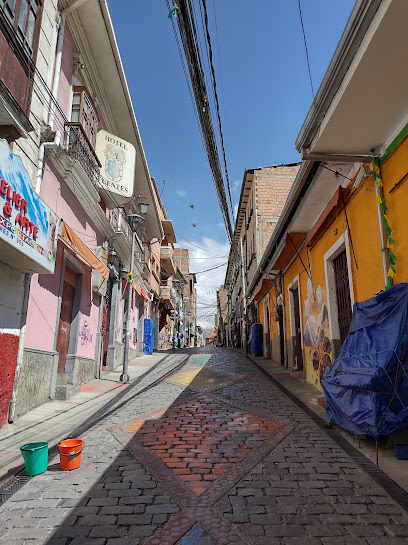
Plaza España
Explore Plaza España in La Paz, a beautiful park that offers a blend of nature, culture, and community in the heart of Bolivia's vibrant capital.

Valle de la Luna
Discover the lunar landscapes of Valle de la Luna, a breathtaking natural wonder near La Paz, perfect for photography and exploration.
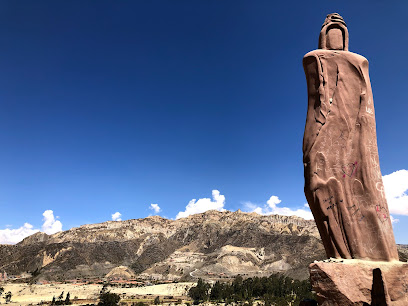
Isabel The Catholic Square
Explore the rich history and vibrant culture at Isabel The Catholic Square, a must-see landmark in La Paz, Bolivia, perfect for every traveler.
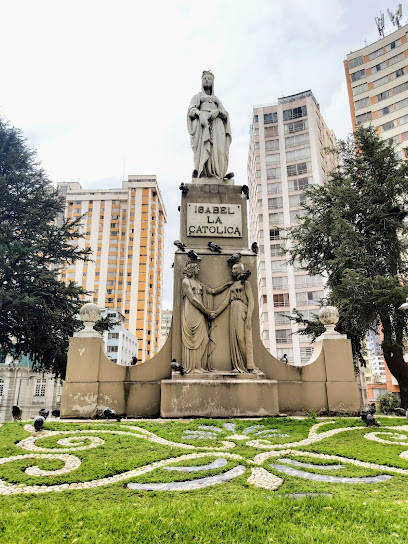
Mirador Killi Killi
Experience breathtaking views of La Paz from Mirador Killi Killi, a stunning viewpoint showcasing the vibrant life and beautiful landscapes of Bolivia's capital.
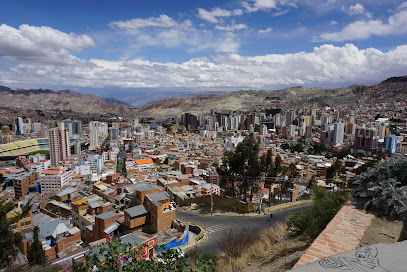
Basilica of Saint Francis
Discover the architectural beauty and cultural significance of the Basilica of Saint Francis, a must-visit Catholic church in La Paz, Bolivia.

Monument to German Busch
Discover the Monument to German Busch, a symbol of Bolivia's rich history and culture, nestled in the vibrant heart of La Paz.
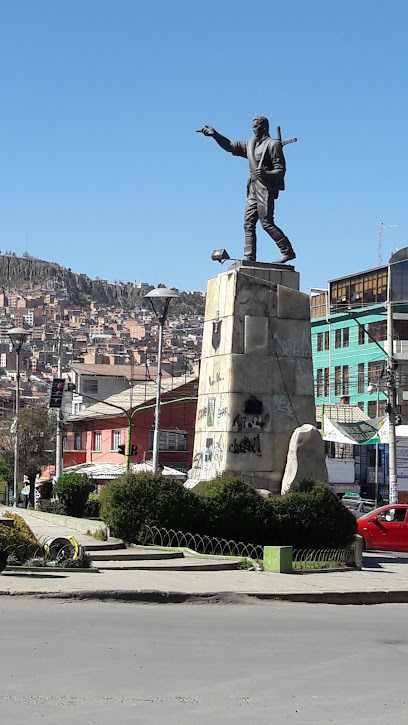
Plaza Bolivia
Discover the tranquility of Plaza Bolivia, a vibrant park in the heart of La Paz, perfect for relaxation and cultural experiences amidst the urban bustle.
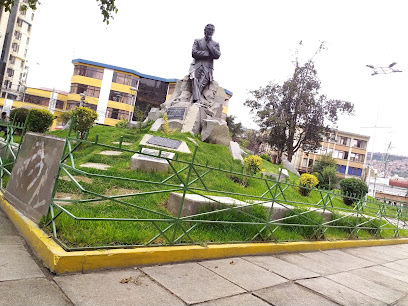
Montículo
Discover the serene beauty of Montículo, La Paz's lush park offering stunning views and a tranquil escape from city life.
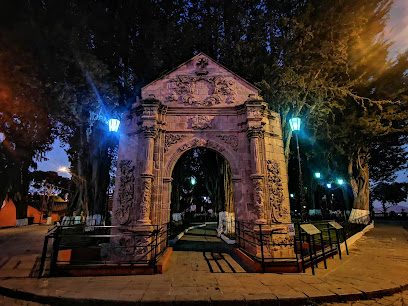
Hb Bronze Coffeebar
Discover the rich flavors of artisanal coffee and a cozy atmosphere at Hb Bronze Coffeebar in La Paz, Bolivia, where every sip tells a story.

Wild Rover La Paz
Experience the vibrant backpacker culture at Wild Rover La Paz, where adventure meets affordability in the heart of Bolivia's capital.
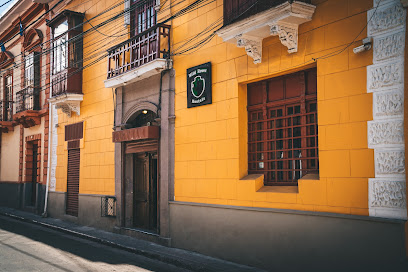
Ethnography Museum
Explore Bolivia's diverse cultures and rich heritage at the Ethnography Museum in La Paz, a captivating journey through history and traditions.
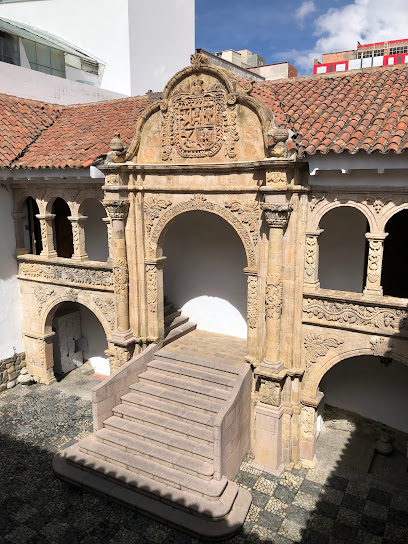
Parque Bartolina Sisa
Explore the beauty and tranquility of Parque Bartolina Sisa, a serene state park in La Paz, Bolivia, perfect for relaxation and outdoor activities.
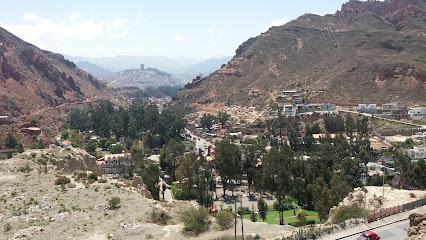
Unmissable attractions to see
Plaza Murillo
Explore the vibrant Plaza Murillo in La Paz, a historic square surrounded by stunning architecture, lively markets, and rich Bolivian culture.

The Witches Market
Discover the mystical allure of The Witches Market in La Paz, Bolivia, where tradition meets vibrant culture in every crafted item.
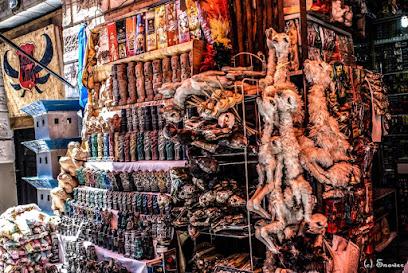
Parque Urbano Central
Explore the lush landscapes of Parque Urbano Central, La Paz's serene escape, perfect for relaxation and cultural experiences amidst stunning mountain views.

Mercado Rodríguez
Experience the vibrant atmosphere of Mercado Rodríguez, where local culture meets colorful stalls and delicious street food in the heart of La Paz, Bolivia.

Valle de la Luna
Explore the surreal landscapes of Valle de la Luna in La Paz, Bolivia, where nature's artistry creates a breathtaking lunar-like scenery.

Mirador Killi Killi
Discover stunning panoramic views of La Paz at Mirador Killi Killi, a must-visit viewpoint for every traveler exploring Bolivia's vibrant capital.
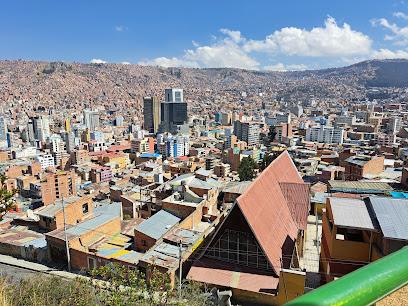
Cota Cota Lagoon
Explore Cota Cota Lagoon: A serene ecological park in La Paz, Bolivia, perfect for outdoor activities and connecting with nature.
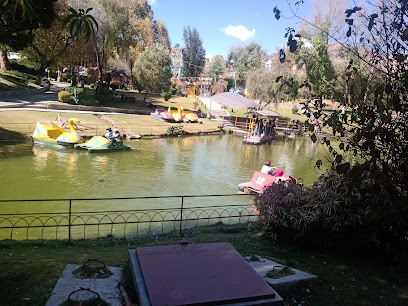
Basilica of Saint Francis
Experience the spiritual and architectural beauty of La Paz at the Basilica of Saint Francis, a must-visit tourist attraction in Bolivia.
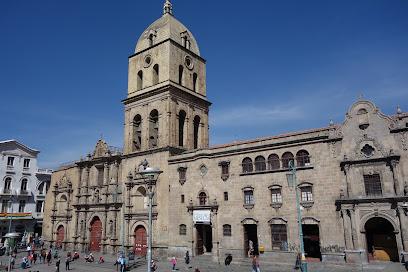
Bioparque Municipal Vesty Pakos Sofro
Explore the Bioparque Municipal Vesty Pakos Sofro, La Paz's premier zoo and animal park, and immerse yourself in Bolivia's rich biodiversity.
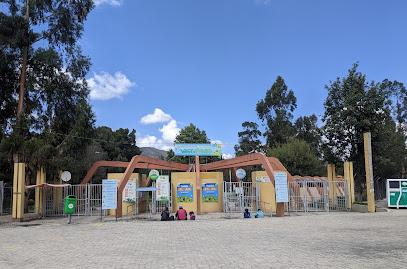
Plaza Bolivia
Discover the tranquility and cultural richness of Plaza Bolivia, a serene park in the heart of La Paz, perfect for relaxation and exploration.
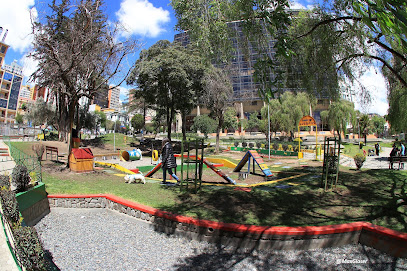
Teatro Municipal Alberto Saavedra Pérez
Experience the vibrant essence of Bolivian culture at Teatro Municipal Alberto Saavedra Pérez, an iconic performing arts theater in La Paz.
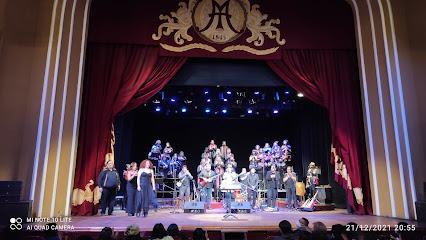
Parque de las Cebras
Experience the artistic charm of Parque de las Cebras, a colorful urban park in La Paz featuring whimsical zebra sculptures and vibrant green spaces.
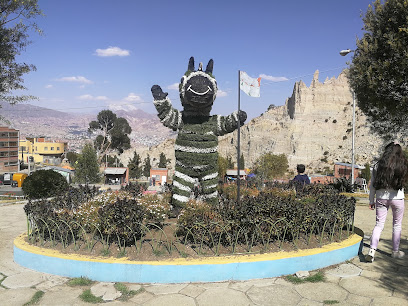
Jardín Botánico
Discover the serene beauty of Jardín Botánico in La Paz, a must-visit botanical garden showcasing Bolivia's rich flora and tranquil landscapes.
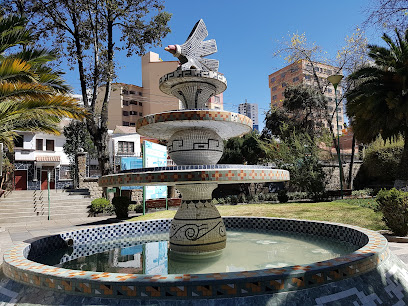
Ethnography Museum
Discover Bolivia's cultural tapestry at the Ethnography Museum in La Paz, where history, art, and tradition come alive.
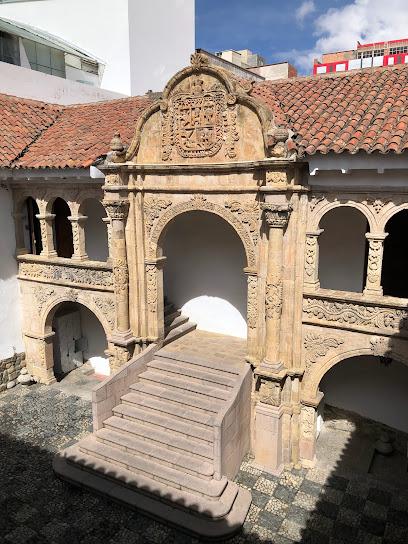
Murillo Lighthouse
Discover the stunning views and rich maritime history at Murillo Lighthouse in La Paz, Bolivia, an iconic tourist attraction that captivates every visitor.
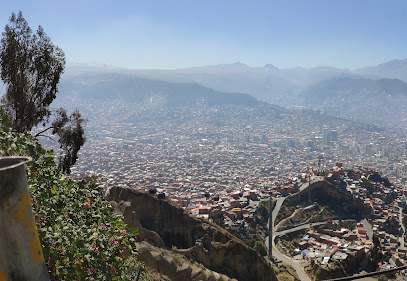
Essential places to dine
Bolivian Popular Food
Explore authentic Bolivian cuisine at Bolivian Popular Food in La Paz - a delightful blend of flavors showcasing the country's culinary heritage.
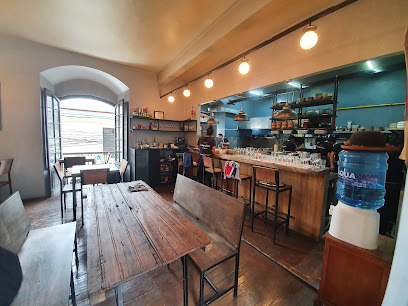
Café del Mundo
Discover Café del Mundo in La Paz - where delightful breakfasts meet exceptional coffee in a cozy atmosphere.
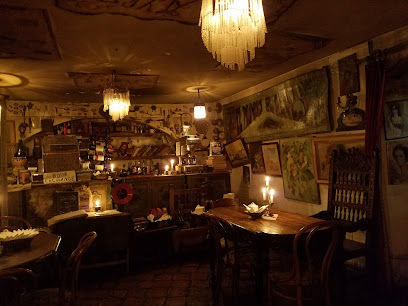
Gustu
Experience the essence of Bolivian cuisine at Gustu in La Paz—where local ingredients meet innovative culinary artistry.
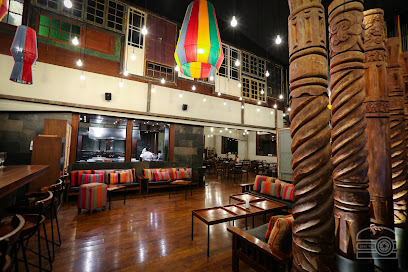
El Vagón del Sur
Discover the exquisite flavors of Bolivia at El Vagón del Sur - where tradition meets modern cuisine in La Paz's vibrant dining scene.

Namas Té
Experience plant-based bliss at Namas Té in La Paz - your go-to vegan restaurant and tea house for wholesome delights.
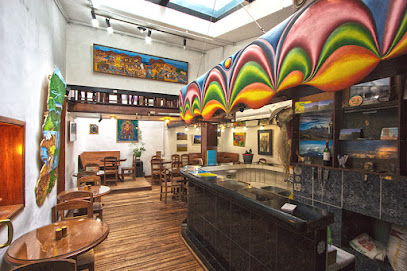
La Tranquera restaurante Sopocachi
Experience the best of Bolivian cuisine at La Tranquera in La Paz – where grill specialties meet vibrant flavors.
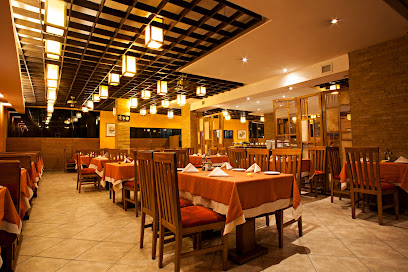
Restaurant Vienna
Experience the finest European cuisine in La Paz at Restaurant Vienna – where elegance meets flavor in every dish.

Sabor Cubano
Discover authentic Cuban cuisine at Sabor Cubano in La Paz—where every dish tells a story of flavor and tradition.

Paceña La Salteña
Experience authentic Bolivian cuisine at Paceña La Salteña in La Paz - savor delicious salteñas and more in a welcoming atmosphere.

La Suisse Restaurante
Discover exquisite Swiss cuisine atop La Paz's Green Tower with stunning views and an unforgettable dining experience.

The Carrot Tree Centro
Discover authentic Bolivian cuisine at The Carrot Tree Centro in La Paz – where tradition meets modern culinary creativity.
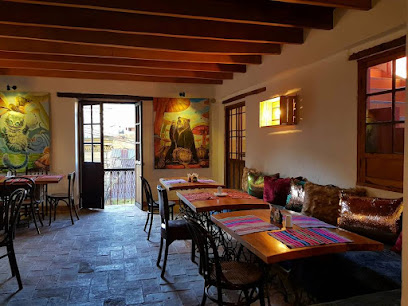
Reineke Fuchs
Experience authentic German cuisine at Reineke Fuchs in La Paz - where tradition meets taste in every bite.
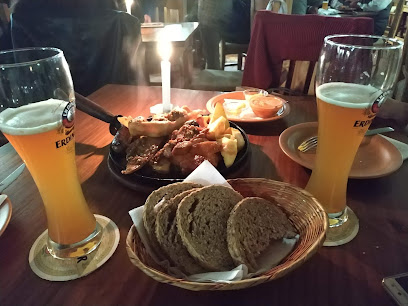
Ali Pacha
Discover Ali Pacha in La Paz – where vibrant vegetarian cuisine meets sustainable dining in an inviting atmosphere.
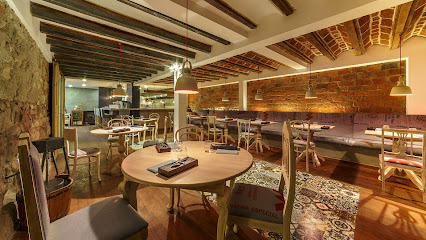
Il Falco
Experience authentic Italian flavors at Il Falco in La Paz—where every dish tells a story.

La Capital Sopocachi
Experience the vibrant culinary scene at La Capital Sopocachi with gourmet burgers, chicken wings & creative cocktails in the heart of La Paz.

Markets, malls and hidden boutiques
The Witches Market
Discover the mystical allure of The Witches Market in La Paz, where vibrant handicrafts and ancient traditions come together in a unique cultural experience.

Las Torres Mall
Explore Las Torres Mall in La Paz for a perfect blend of shopping, dining, and entertainment in a vibrant atmosphere.
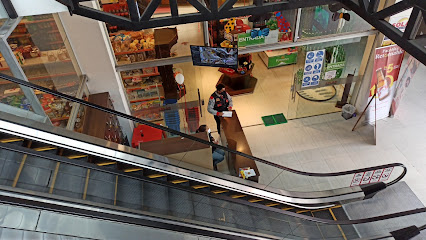
Shopping Norte
Discover Shopping Norte in La Paz, where diverse retail options meet Bolivian culture in a modern shopping experience.

Handal Center
Discover the vibrant shopping and dining scene at Handal Center, the premier mall in La Paz, Bolivia, offering unique experiences and local flavors.

Fair Play
Discover Fair Play in La Paz, your ultimate destination for premium sportswear and outdoor gear, perfect for every adventure in Bolivia's stunning landscapes.
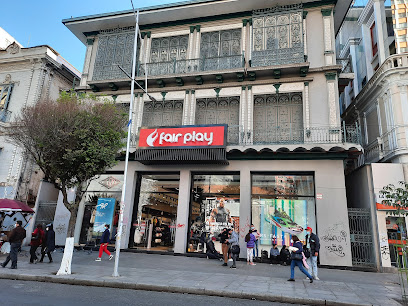
Plaza Real Shopping Center
Explore the Plaza Real Shopping Center in La Paz - your destination for shopping, dining, and entertainment in Bolivia's vibrant capital.
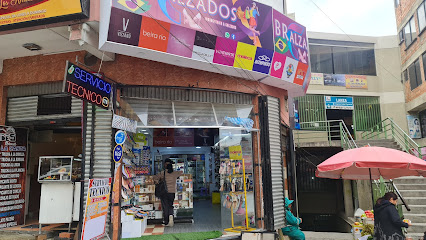
Galería Litoral
Discover unique Bolivian crafts and home decor at Galería Litoral, a must-visit destination for tourists in La Paz, Bolivia.

Mistura - Manifestación Creativa
Explore Mistura, the vibrant boutique in La Paz, showcasing unique clothing and accessories that celebrate Bolivian culture and craftsmanship.
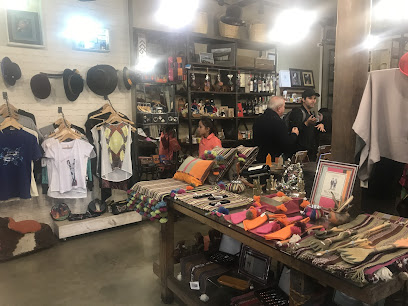
Galería LA PAZ
Discover Galería LA PAZ, a vibrant shopping mall in La Paz, where local culture meets modern retail bliss.

Yume anime store
Explore the vibrant world of anime at Yume Anime Store in La Paz, offering a vast selection of merchandise from figures to manga.
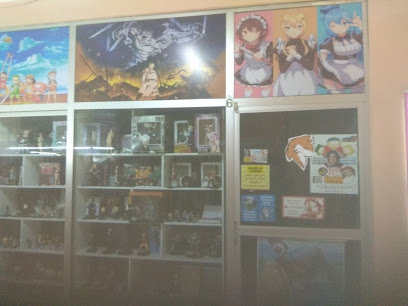
LAM Bolivia
Explore the rich cultural heritage of Bolivia at LAM Bolivia, your go-to destination for unique handicrafts and souvenirs in La Paz.

Wow Artistic Ideas
Explore unique Bolivian handicrafts and artistic treasures at Wow Artistic Ideas, a must-visit gift shop in La Paz.
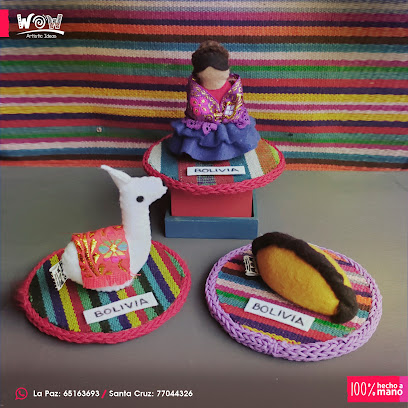
Mink'a
Explore Mink'a in La Paz for unique handcrafted souvenirs that celebrate Bolivian culture, ensuring memorable keepsakes from your travels.
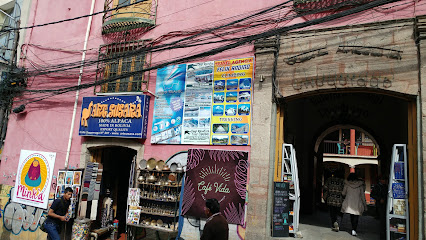
Yutaka Store Zona Sur
Explore the finest vaporizers at Yutaka Store Zona Sur in La Paz, where quality products meet expert advice in a welcoming atmosphere.

SY-KAME SHOP BOLIVIA
Explore SY-KAME Shop in La Paz for authentic Bolivian gifts and crafts that reflect the rich cultural heritage of Bolivia.

Essential bars & hidden hideouts
Pub & Disco Malegria
Discover the heart of La Paz's nightlife at Pub & Disco Malegria, where vibrant music and delicious drinks create unforgettable evenings.
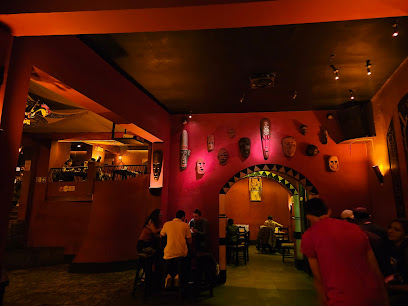
Hb Bronze Coffeebar
Discover the vibrant coffee culture at Hb Bronze Coffeebar in La Paz, where artisanal brews meet a cozy atmosphere.
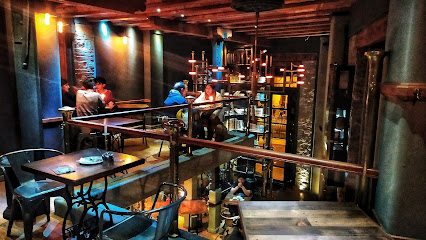
Diesel Nacional
Experience the vibrant nightlife of La Paz at Diesel Nacional, a premier pub known for its creative cocktails and lively atmosphere.

The English Pub
Discover the charm of The English Pub in La Paz, where traditional flavors and a vibrant atmosphere meet local Bolivian hospitality.
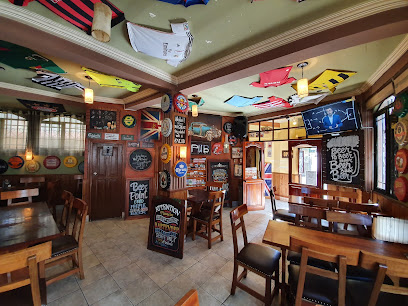
Mechanical Wood
Discover the vibrant nightlife at Mechanical Wood, a lively bar in La Paz with a wide selection of drinks and a warm atmosphere.
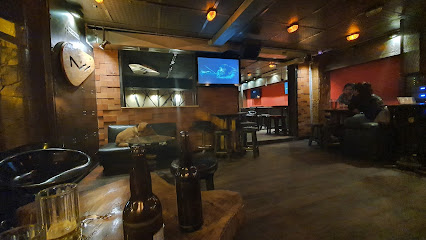
ROCKERS ALIVE MUSIC BAR
Discover the energetic vibe of Rockers Alive Music Bar in La Paz, where live music, great drinks, and unforgettable nights await you.
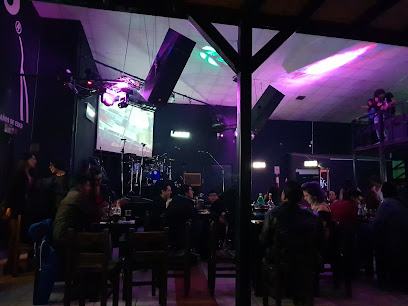
Pueblo Viejo
Discover the vibrant flavors of Bolivia at Pueblo Viejo, La Paz's must-visit gastropub offering a unique culinary experience.
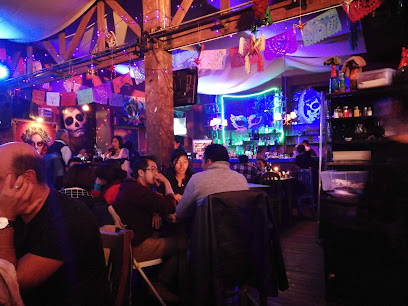
DT Brew House
Discover the culinary delights of DT Brew House in La Paz, where flavorful grills meet craft brews in a vibrant atmosphere.
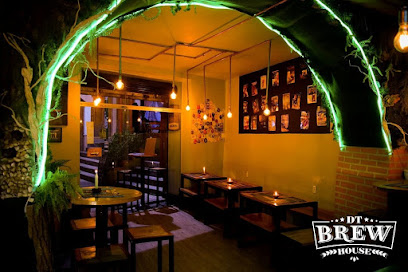
Mato's
Experience the vibrant nightlife of La Paz at Mato's, where every drink tells a story and every night is a celebration.
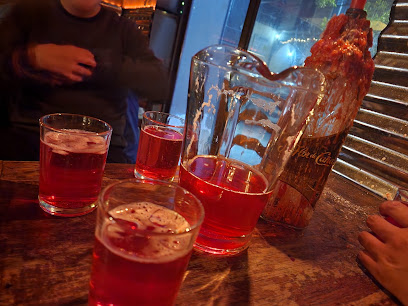
CALDERAS SOPOCACHI Cafe Pub-club
Explore the vibrant nightlife of La Paz at CALDERAS SOPOCACHI Cafe Pub-club, where local flavors and friendly faces meet.

The English Lion's Den
Experience the vibrant atmosphere of The English Lion's Den, La Paz's premier sports pub offering delicious food, drinks, and live sports in a lively setting.
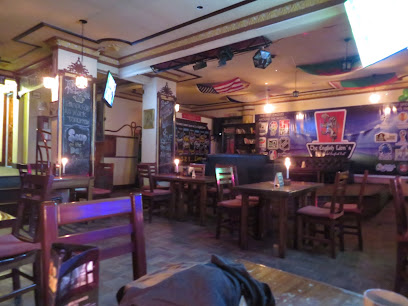
Capotraste Music Bar
Discover the vibrant Capotraste Music Bar in La Paz, where live music meets an energetic atmosphere and a delightful drink selection.
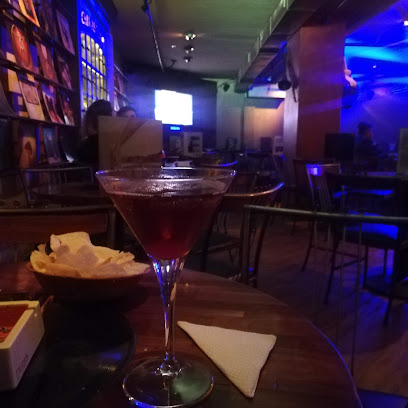
The Lucky Llama Irish Bar
Experience authentic Irish hospitality and vibrant nightlife at The Lucky Llama Irish Bar in La Paz, Bolivia. A must-visit for food and drink lovers.

Calderas pub-club
Discover Calderas Pub-Club in La Paz: A lively rock music venue offering unique cocktails and a vibrant atmosphere for an unforgettable night out.
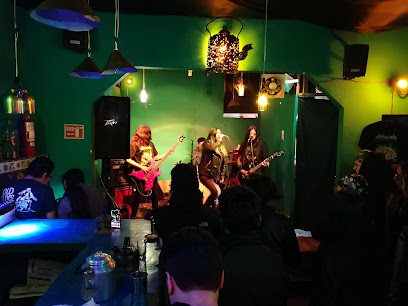
La Costilla de Adan
Experience the vibrant nightlife at La Costilla de Adan, a popular bar in La Paz offering creative cocktails and an unforgettable atmosphere.
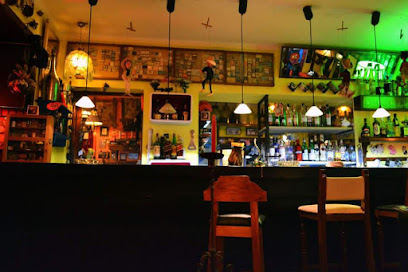
Local Phrases
-
- HelloHola
[oh-lah] - GoodbyeAdiós
[ah-dyohs] - YesSí
[see] - NoNo
[noh] - Please/You're welcomePor favor/De nada
[por fah-vohr/deh nah-dah] - Thank youGracias
[grah-syahs] - Excuse me/SorryPerdón
[pehr-dohn] - How are you?¿Cómo estás?
[koh-moh ehs-tahs] - Fine. And you?Bien. ¿Y tú?
[byehn. ee too] - Do you speak English?¿Hablas inglés?
[ah-blahs een-glehs] - I don't understandNo entiendo
[noh ehn-tyen-doh]
- HelloHola
-
- I'd like to see the menu, pleaseMe gustaría ver el menú, por favor
[meh goos-tah-reeah behr ehl meh-noo, por fah-vohr] - I don't eat meatNo como carne
[noh koh-moh kahr-neh] - Cheers!Salud!
[sah-lood] - I would like to pay, pleaseMe gustaría pagar, por favor
[meh goos-tah-reeah pah-gahr, por fah-vohr]
- I'd like to see the menu, pleaseMe gustaría ver el menú, por favor
-
- Help!¡Ayuda!
[ah-yoo-dah] - Go away!¡Vete!
[veh-teh] - Call the Police!¡Llama a la Policía!
[yah-mah ah lah poh-lee-see-ah] - Call a doctor!¡Llama a un doctor!
[yah-mah ah oon dohk-tohr] - I'm lostEstoy perdido
[ehs-toy pehr-dee-doh] - I'm illEstoy enfermo
[ehs-toy ehn-fehr-moh]
- Help!¡Ayuda!
-
- I'd like to buy...Me gustaría comprar...
[meh goos-tah-reeah kohm-prahr] - I'm just lookingSolo estoy mirando
[soh-loh ehs-toy meer-ahn-doh] - How much is it?¿Cuánto cuesta?
[kwan-toh kwehs-tah] - That's too expensiveEso es demasiado caro
[eh-soh ehs deh-mah-syah-doh kah-roh] - Can you lower the price?¿Puedes rebajar el precio?
[pweh-dehs reh-bah-hahr ehl pree-syoh]
- I'd like to buy...Me gustaría comprar...
-
- What time is it?¿Qué hora es?
[keh oh-rah ehs] - It's one o'clockEs la una
[ehs lah oo-nah] - Half past (10)Media (10)
[meh-dyah (diez)] - MorningMañana
[mah-nyah-nah] - AfternoonTarde
[tahr-deh] - EveningNoche
[noh-cheh] - YesterdayAyer
[ah-yehr] - TodayHoy
[oy] - TomorrowMañana
[mah-nyah-nah] - 1Uno
[oo-noh] - 2Dos
[dohs] - 3Tres
[trehs] - 4Cuatro
[kwah-troh] - 5Cinco
[seen-koh] - 6Seis
[says] - 7Siete
[syeh-teh] - 8Ocho
[oh-choh] - 9Nueve
[nweh-veh] - 10Diez
[dyehs]
- What time is it?¿Qué hora es?
-
- Where's a/the...?¿Dónde está...?
[dohn-deh ehs-tah] - What's the address?¿Cuál es la dirección?
[kwal ehs lah dee-rehk-syon] - Can you show me (on the map)?¿Puedes mostrarme (en el mapa)?
[pweh-dehs mohs-trahr-meh (ehn ehl mah-pah)] - When's the next (bus)?¿Cuándo es el próximo (bus)?
[kwan-doh ehs ehl proh-ksee-moh (boos)] - A ticket (to ....)Un boleto (a ....)
[oon boh-leh-toh (ah)]
- Where's a/the...?¿Dónde está...?
History of La Paz
-
La Paz was founded on October 20, 1548, by the Spanish conquistador Alonso de Mendoza. The city was originally named Nuestra Señora de La Paz, which means 'Our Lady of Peace,' to commemorate the restoration of peace following a civil war in Peru. Its location in a canyon created by the Choqueyapu River was strategically chosen for its defensible position and access to water.
-
During the Spanish colonial period, La Paz became an important administrative and commercial center. The city's economy flourished due to its role in the silver trade from the nearby Potosí mines, which were among the richest in the world. The wealth generated from silver attracted merchants and settlers, leading to significant urban development and the construction of many colonial buildings that still stand today.
-
La Paz played a pivotal role in Bolivia's struggle for independence from Spanish rule. On July 16, 1809, the city was the site of one of the first major uprisings in Latin America, known as the La Paz Revolution. This rebellion, led by Pedro Domingo Murillo, was a precursor to the broader South American wars of independence. Although the uprising was initially suppressed, it set the stage for Bolivia's eventual liberation in 1825.
-
In 1898, La Paz became the seat of the Bolivian government, a status it retains to this day, while Sucre remains the constitutional capital. This move was largely driven by La Paz's economic and political importance, as well as its more accessible location compared to Sucre. The decision led to a period of rapid modernization and expansion, with the city becoming the political and administrative heart of Bolivia.
-
The Chaco War (1932-1935) between Bolivia and Paraguay had a significant impact on La Paz. The conflict over the Gran Chaco region, believed to be rich in oil, resulted in heavy casualties and economic strain for Bolivia. La Paz, as the administrative center, was deeply involved in the war effort, and the aftermath saw political instability and social unrest, which influenced the city's development and the nation's policies in the following decades.
-
La Paz is renowned for its rich cultural and ethnic diversity. The city's population is a vibrant mix of indigenous Aymara and Quechua peoples, Mestizos, and European descendants. This diversity is reflected in La Paz's festivals, markets, and daily life. The city's annual 'Gran Poder' festival, for example, is a major event that showcases traditional dances, music, and costumes, celebrating the syncretism of indigenous and Catholic traditions.
-
In recent decades, La Paz has experienced significant growth and modernization. The construction of the Mi Teleférico cable car system has transformed urban transportation, providing a unique and efficient way to navigate the city's challenging topography. La Paz has also become a hub for tourism, attracting visitors with its stunning landscapes, including the nearby Andes mountains and the breathtaking Valle de la Luna (Moon Valley).
La Paz Essentials
-
La Paz is served by the El Alto International Airport (IATA: LPB), which is located about 13 kilometers from the city center. Several international airlines operate direct flights to La Paz from major cities in South America, as well as from Miami in the United States. Alternatively, you can reach La Paz by bus from other Bolivian cities such as Cochabamba, Sucre, and Santa Cruz. The buses are generally comfortable and offer a scenic route through the Andes.
-
La Paz has a variety of transportation options. The Teleférico (cable car) system is a popular and efficient way to get around the city, offering stunning aerial views. Minibuses and micros (small buses) are the most common forms of public transportation and cover extensive routes throughout the city. Taxis are also widely available, but it is advisable to use registered radio taxis for safety. Walking is feasible in some areas, but be mindful of the city's high altitude and steep streets.
-
The official currency of Bolivia is the Bolivian Boliviano (BOB). Credit cards are accepted in many hotels, restaurants, and shops in La Paz, but it is advisable to carry some cash for smaller establishments and markets. ATMs are plentiful in the city, and you can withdraw local currency using international debit or credit cards. Currency exchange services are available at the airport, banks, and exchange bureaus around the city.
-
La Paz is generally safe for tourists, but it is important to take standard precautions. Avoid carrying large sums of cash and keep your belongings secure in crowded areas. Areas such as El Alto and certain parts of the city center can have higher crime rates, including pickpocketing and scams targeting tourists. Be cautious when walking alone at night and consider using registered taxis for transportation during late hours.
-
In case of emergency, dial 110 for police assistance and 118 for medical emergencies. Major hospitals in La Paz include Hospital Arco Iris and Hospital del Norte. It is advisable to have travel insurance that covers medical emergencies. For minor health issues, pharmacies are widely available where you can purchase over-the-counter medications. The U.S. Embassy in La Paz can also provide assistance to American citizens in emergency situations.
-
Fashion: Do dress in layers, as the weather can change rapidly due to the high altitude. Avoid flashy jewelry and expensive accessories. Religion: Do respect local customs and traditions, especially when visiting churches and religious sites. Public Transport: Do be prepared for crowded minibuses and micros. Don't expect English to be widely spoken; learning some basic Spanish phrases can be helpful. Greetings: Do greet people with a handshake. A friendly 'buenos días' (good morning) or 'buenas tardes' (good afternoon) is appreciated. Eating & Drinking: Do try local delicacies such as salteñas and anticuchos. Don't drink tap water; always opt for bottled water.
-
To experience La Paz like a local, visit the Mercado Rodríguez for fresh produce and traditional Bolivian foods. The Witches' Market (Mercado de las Brujas) offers unique souvenirs and traditional remedies. Engage with locals by attending a football match at the Estadio Hernando Siles or exploring the vibrant nightlife on Calle Jaén. Don't miss a visit to the Valle de la Luna (Moon Valley) for an otherworldly landscape just outside the city.
Trending Landmark in La Paz
Nearby Cities to La Paz
-
Things To Do in Copacabana
-
Things To Do in Puno
-
Things To Do in Cochabamba
-
Things To Do in Tacna
-
Things To Do in Arica
-
Things To Do in Arequipa
-
Things To Do in Sucre
-
Things To Do in Potosi
-
Things To Do in Uyuni
-
Things To Do in Iquique
-
Things To Do in Cusco
-
Things To Do in Santa Cruz de la Sierra
-
Things To Do in Machu Picchu
-
Things To Do in Tarija
-
Things To Do in San Pedro de Atacama













